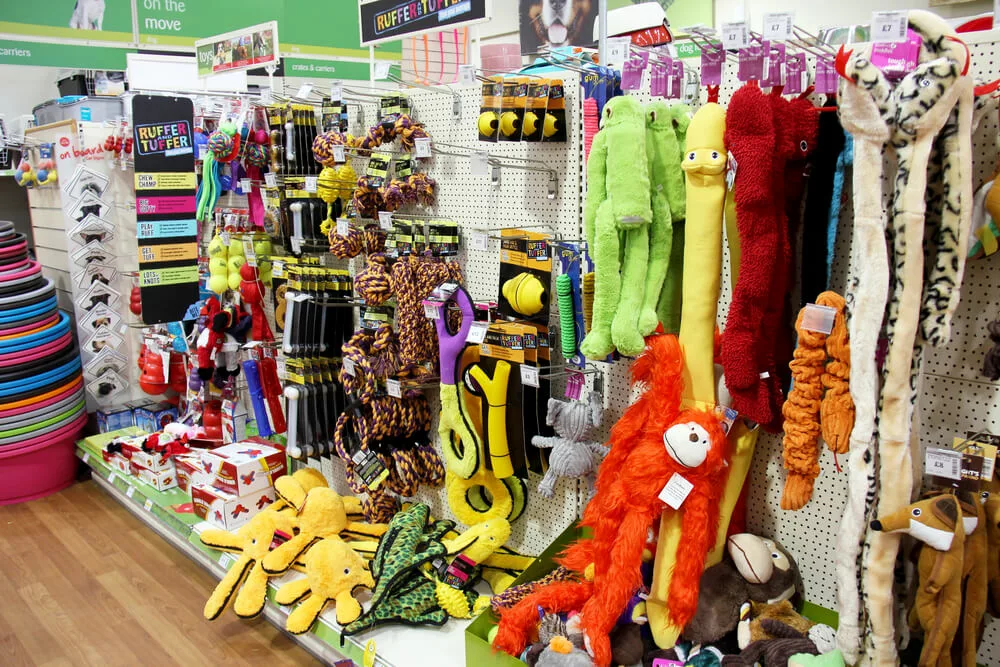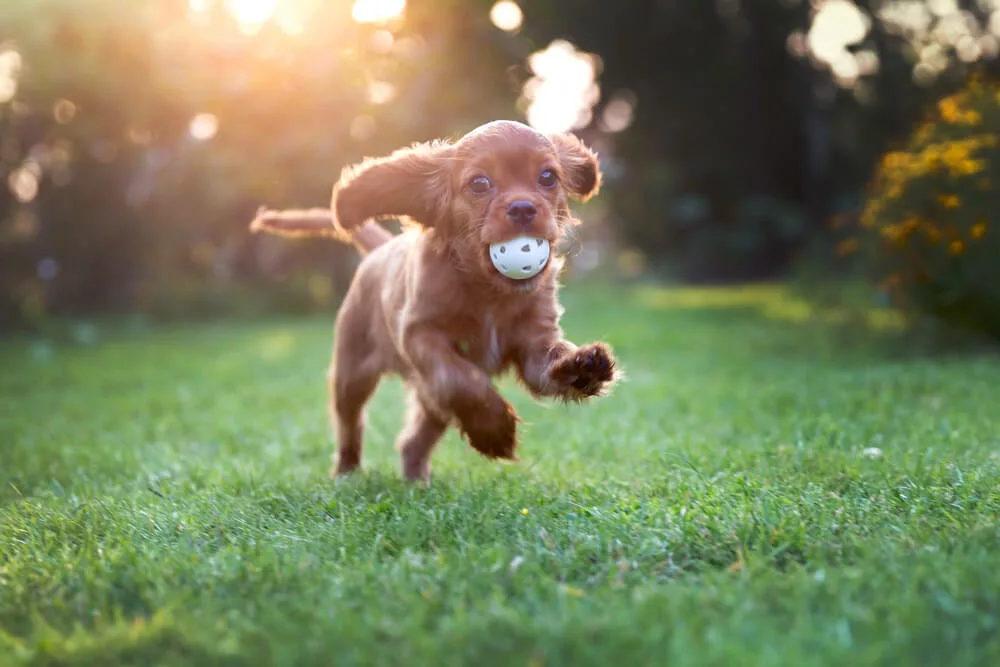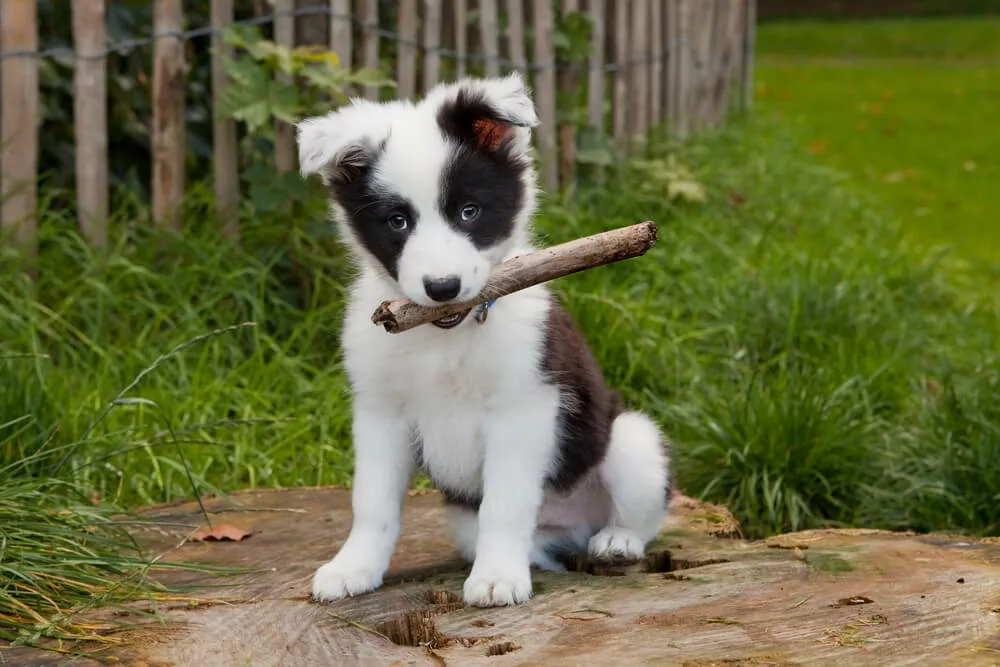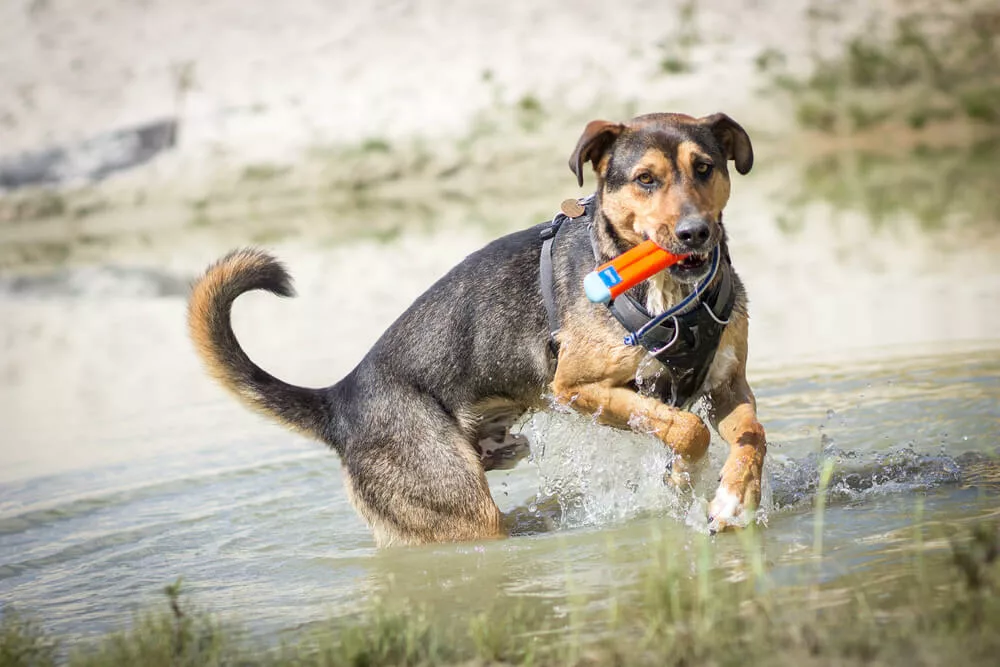As dog owners, we want nothing more than to see our furry friends happy, healthy, and entertained. However, choosing the wrong toys for our canine companions can lead to emotional and physical harm, resulting in anything from frustration and boredom to severe injuries. With a plenty of toys available on the market, it’s essential to understand our dogs’ breeds and personalities to make informed decisions when selecting toys that cater to their specific needs.
We’ll delve into the importance of knowing your dog’s breed and individual quirks while highlighting the benefits of choosing the right toys to ensure a safe, engaging, and enjoyable playtime experience for both your dog and you. By making thoughtful toy selections, you’re not only investing in your dog’s well-being but also fostering a strong bond between you and your beloved pet. So, let’s embark on this journey towards creating a happy, tail-wagging playtime for our four-legged family members.
Why Selecting the Best Toys for Your Dog is Important: The Impact on Your Dog’s Well-Being

As responsible dog owners, we strive to provide our furry friends with everything they need for a happy, healthy life. One aspect of pet care that is often overlooked is the importance of selecting the right toys for our canine companions.
Dog Toys Can Help Keep Your Dog Physically and Mentally Active
One of the primary benefits of dog toys is their ability to keep our pets physically and mentally active.
By choosing a toy that cater to your dog’s breed, size, and personality, you can ensure that they remain engaged and stimulated during playtime. Interactive dog toys, such as puzzle feeders and treat-dispensing toys, can help to challenge your dog’s problem-solving skills, while durable rubber toys and fetching toys can provide much-needed physical exercise.
The Right Dog Toy Can Help with Dental Health
In addition to promoting physical and mental activity, the correct dog toy can also contribute to your pet’s dental health. Chewing on toys can help to remove plaque and tartar from your dog’s teeth, reducing the risk of periodontal disease.
When selecting a toy for dental health, opt for durable rubber or nylon chew toys that are specifically designed to withstand chewing and help to clean your dog’s teeth. Avoid toys that can splinter or break apart, as these can cause injury or dental damage.
Picking the Wrong Toy Can Lead to Safety Issues
Conversely, choosing the wrong toy for your dog can lead to safety issues, such as choking hazards or ingestion of harmful materials. To minimize these risks, it’s essential to select toys that are appropriate for your dog’s size, breed, and chewing habits.
Additionally, regularly inspect your dog’s toys for signs of wear and tear, and replace them when necessary to ensure safe playtime.
What Types of Dog Toys Are Available?

As a new dog owner, it can be overwhelming to navigate the vast array of toys available in the market. Understanding the different types of toys and their benefits is essential in making informed decisions when selecting toys that cater to your furry friend’s specific needs.
Plush Toys
Plush toys are soft, cuddly toys designed to provide comfort and companionship for your dog. They come in various shapes, sizes, and textures, often resembling animals or characters. Those soft toys are favorite by many dogs.
- Best suited for: Dogs who enjoy a gentle play or snuggling with their toys.
- Benefits: Those toys can help alleviate anxiety and provide a sense of security for your dog.
- Buying tips: Give your dog toys that made from durable materials that can withstand your dog’s play habits. Opt for toys without small parts or weak seams that may be easily torn apart.
Rope Toys
Rope toys are made from braided or knotted cotton or nylon ropes, designed to withstand tugging and chewing.
- Best suited for: Dogs who love to chew and engage in tug-of-war games.
- Benefits: Those toys can help clean your dog’s teeth and gums, reducing plaque buildup and promoting dental health.
- Buying tips: Select toys that made from non-toxic materials and ensure they are appropriately sized for your dog’s breed and strength.
Tug Toys
Tug toys are designed for interactive play between you and your dog, often made from sturdy materials such as rubber, nylon, or rope.
- Best suited for: Dogs that enjoy rough play and bonding with their owners through interactive games.
- Benefits: Those toys can provide physical exercise and, mental stimulation, and strengthen the bond between you and your dog.
- Buying tips: Look for toys with comfortable handles for you to grip, and select toys that can withstand your dog’s strength and enthusiasm.
Chew Toys
Chew toys are designed for dogs to gnaw on, made from materials such as hard rubber, nylon, or natural materials like wood or antlers.
- Best suited for: Dogs with a strong urge to chew, including teething puppies and heavy chewers.
- Benefits: Those toys can help alleviate boredom, reduce anxiety, and promote dental health by cleaning teeth and massaging gums.
- Buying tips: Select toys that made from durable, non-toxic materials that are appropriate for your dog’s size and chewing strength. Avoid toys that can splinter or break apart easily.
Interactive Toys
Interactive toys are designed to engage your dog’s problem-solving skills and provide mental stimulation. These toys often involve puzzles, treat-dispensing mechanisms, or moving parts.
- Best suited for: Dogs that require mental challenges and enjoy engaging in activities that stimulate their minds.
- Benefits: Those toys can help prevent boredom, reduce destructive behaviors, and promote cognitive development.
- Buying tips: Select toys that are suitable for your dog’s intelligence level and provide an appropriate level of challenge. Look for toys that made from durable materials that can withstand your dog’s play habits.
How to Choose the Best Toy: A Comprehensive Guide for Pet Owners

Selecting the perfect toy for your canine companion can be a daunting task, given the wide variety of options available. We will provide you with valuable tips and insights on how to choose the best dog toy, taking into consideration your dog’s age, size, play style, and preferences, as well as the safety and durability of the materials used.
Consider Your Dog’s Age and Size
When choosing a dog toy, it is essential to consider your pet’s age and size to ensure that the toy is appropriate and safe for them.
- Puppies: Opt for toys designed specifically for puppies, as they are often made from softer materials and cater to teething needs. Examples include soft rubber chew toys, plush toys, and small rope toys.
- Adult dogs: Provide toys that match your dog’s size and strength. For example, larger breeds may require tougher, more durable toys, while smaller breeds might prefer lightweight or softer toys.
- Senior dogs: Older dogs may have more sensitive teeth and gums, search for toys that made of softer materials or designed for gentle play like stuffed toys.
Think About Your Dog’s Play Style and Preferences
Understanding your dog’s play style and preferences is crucial in selecting toys that will keep them engaged and entertained.
- Chewers: If your dog loves to chew, opt for durable chew toys made from hard rubber or nylon that can withstand their strong jaws.
- Fetchers: Dogs who enjoy fetching games would appreciate toys such as balls, frisbees, or flying discs.
- Tuggers: For dogs that love tug-of-war, select toys that made from strong materials like rope or rubber.
- Cuddlers: If your dog enjoys cuddling or carrying toys around, plush toys or soft fabric toys may be ideal.
To determine your dog’s play habits, observe them during playtime and take note of their preferred activities and the types of toys they gravitate towards.
Choose Toys Made with Safe and Durable Materials
Selecting toys made from safe and durable materials is essential to ensure your dog’s safety and the longevity of the toy.
- Non-toxic materials: Look for toys made from non-toxic materials, such as BPA-free plastics or natural rubber.
- Durability: Select toys that can withstand your dog’s play habits. For heavy chewers, opt for toys made from tough materials like heavy-duty rubber or reinforced nylon.
- Safety features: Avoid toys with small parts that can be easily detached and swallowed, such as loose squeakers or plastic eyes. Instead, opt for toys with securely embedded or hidden components.
3 Tips for Keeping Your Dog Interested in Their Toys

Toys play a vital role in your dog’s life, contributing to their physical and emotional well-being. A well-chosen selection of toys can provide mental stimulation, prevent boredom, and offer an outlet for energy and instincts. However, keeping your dog interested in their toys can sometimes be a challenge.
1. Rotate Their Toys Regularly
One of the most effective strategies to sustain the interest of your canine companion in their toys involves regular rotation. Introducing new toys or bringing out old favorites can reignite your dog’s excitement and encourage playtime. Rotating toys not only prevents boredom but also improves mental stimulation, as your dog must continuously adapt to different toys and their unique challenges.
To implement a successful toy rotation, consider the following tips:
- Store a portion of your dog’s toys out of sight and switch them out every few weeks.
- Introduce new toys gradually, so your dog has time to explore and enjoy each one.
- Pay attention to your dog’s preferences, and make sure to include their favorite toys in the rotation.
2. Choose Toys That Serve Multiple Purposes
Selecting toys that serve multiple purposes can help maintain your dog’s interest and provide a range of benefits. Toys that combine physical and mental stimulation are ideal, as they engage various aspects of your dog’s well-being. Examples of multi-purpose toys include treat-dispensing toys and puzzle toys.
Treat-dispensing toys require your dog to manipulate the toy to release treats, providing both a physical and mental challenge. Puzzle toys stimulate problem-solving skills, as your dog must figure out how to access hidden rewards. By offering a variety of multi-purpose toys, you can ensure your dog remains engaged and receives a well-rounded play experience.
3. Engage in Playtime with Your Dog and Their Toys
Active participation from you, the owner, can significantly enhance your dog’s interest in their toys. Dogs inherently crave interaction with their human companions, so engaging in playtime together can boost their enthusiasm for toys. Try incorporating interactive dog toys, such as tug toys or fetch toys, into your play sessions to strengthen the bond between you and your dog while keeping them interested in their toys.
Remember to:
- Set aside time each day for interactive play with your dog.
- Encourage your dog to explore and engage with their toys during playtime.
- Praise and reward your dog when they show interest in their toys, reinforcing positive play behavior.






